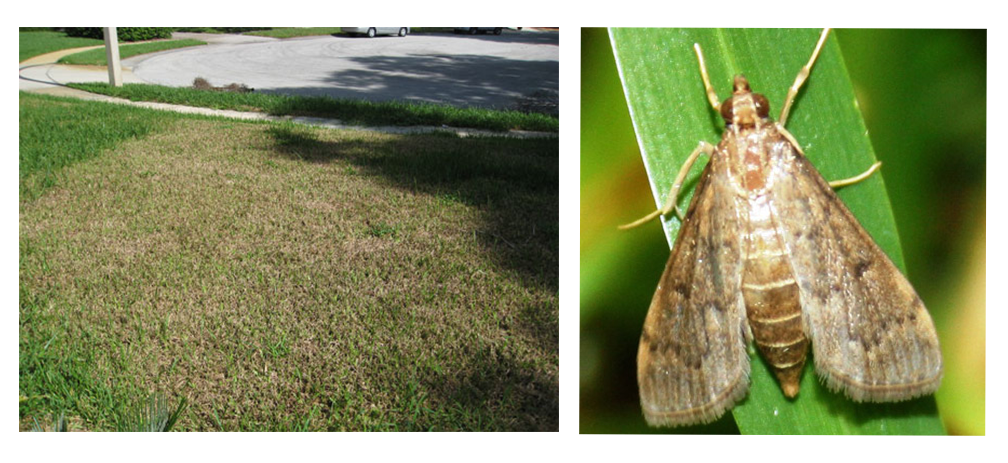It is only July and at Frontier Exterminating we have started receiving phone calls about Sod Webworms. Due to the extent of yard damage Houstonians suffered over the 2016 late summer months many homeowners are keeping a watchful eye on their grass this year and asking how they can be better prepared this summer.
According to “lawn experts” cited in an abc13.com article from September 2016 “its been at least three decades since they've seen this many yards, this devastated. They are seeing this occur all across the greater Houston area.” Many customers are determined to not let Sod Webworms sneak up on them in 2017. Frontier Exterminating recommends you know what to look for so you can catch the Sod Webworms and act quickly. In 2016 many people weren’t aware of their issue until they started seeing low flying moths around the yard. And in many cases people waited until they were seeing a lot of moths around the yard. It is actually the larval stage of the moth which is destructive to our grass. GardenLine’s Randy Lemmon “The first signs of sod webworm damage are areas of unevenly clipped grass and patches of brown or closely clipped grass. The larvae remain active for several weeks, and then pupate. Adults appear about a week later. Their life cycle is completed in 5-6 weeks with several generations per year.” Frontier Exterminating offers full yard treatments as both a preventative option and to treat yards affected by Sod Webworms. If you are in the Houston and surrounding suburbs give Frontier Exterminating a call with any questions, concerns or inquiries. http://entnemdept.ufl.edu/creatures/ORN/TURF/Tropical_sod_webworm.htm http://abc13.com/news/webworms-turning-green-grass-brown-across-houston/1519714/ http://ktrh.iheart.com/onair/gardenline-with-randy-lemmon-25172/sod-webworms-and-cutworms-are-very-15060183/

